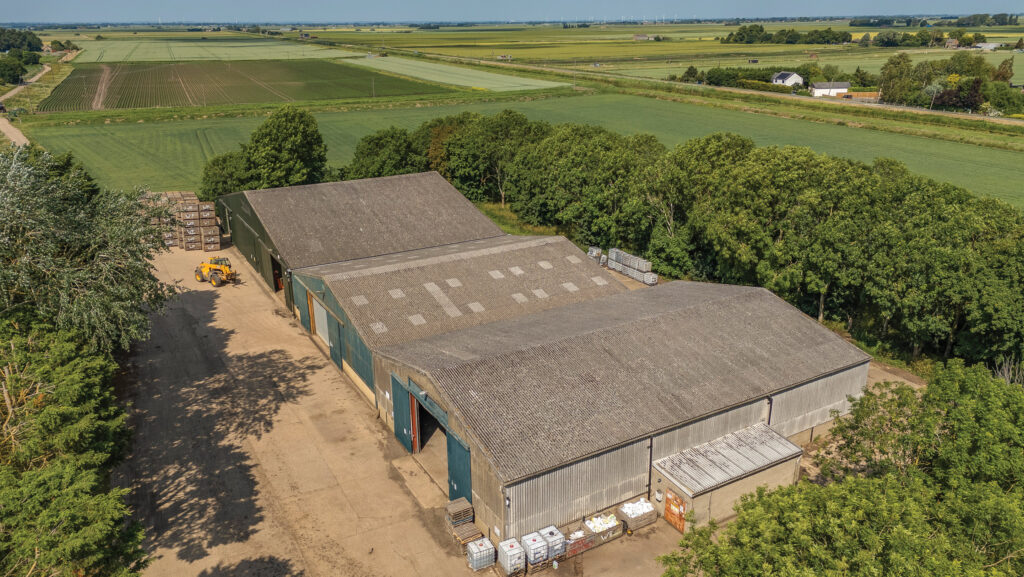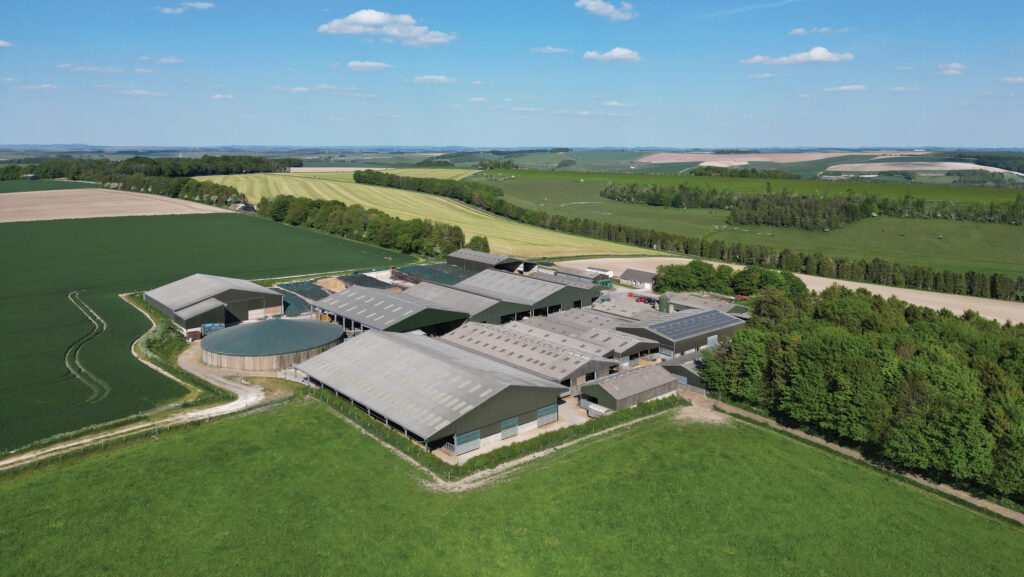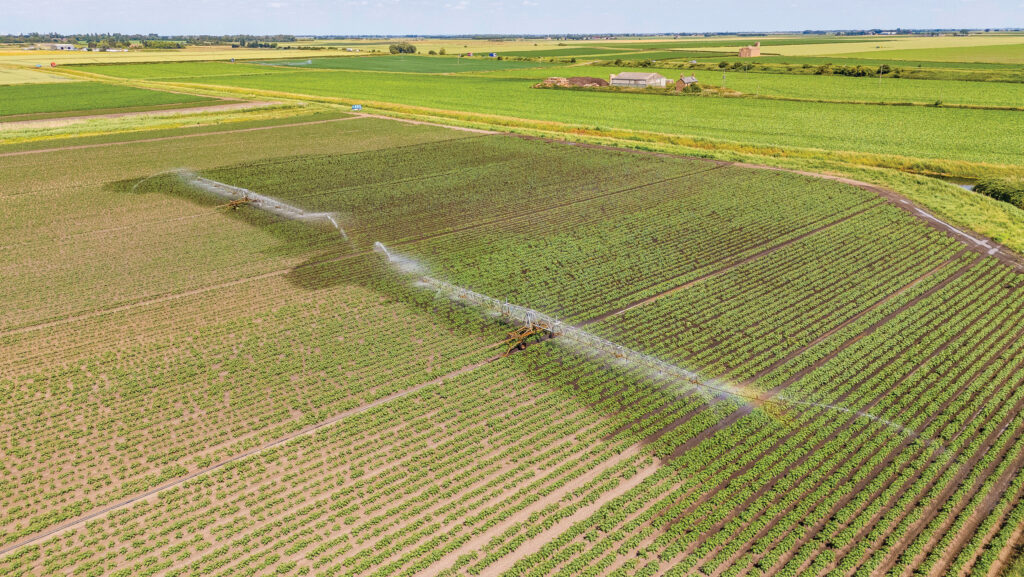Farmland 2025: Competitive pricing needed in slow market
 © Savills
© Savills After a slow start to 2025, the second quarter of the year saw marketings move up a gear, with some notable quality large arable and mixed holdings for sale.
By mid-July, Farmers Weekly‘s Land Tracker, recording the number of acres advertised in the publication, was at 68,759 acres, which is 22% higher than at the same point in 2024. In the week ended 11 July alone, more than 6,000 acres was advertised.
Buyers have more choice and are more discerning, say land agents, although “best in class” property is still selling well and sometimes very quickly.
The market lacks momentum, says Knight Frank, and is subdued and inconsistent.
“There’s no clear rhyme or reason as to what’s selling and what’s not,” says Will Matthews, the firm’s head of farms and estates sales, although bare blocks of high-quality arable and pasture land continue to attract strong interest.
See also: Farm and land sales common issues that delay and complicate
“Some farms that have been sitting on the market for a while are suddenly attracting strong interest, while others are proving difficult to even get viewings,” says Will.
“We’re not seeing clear value trends, and that reflects how few deals are actually being done.”
He says the current higher area for sale is a reaction to how little happened last year and doesn’t signal any major shift in sentiment among landowners.
Housing market knock-on effect
A slower housing market means fewer rollover buyers, while a cooler prime housing market is having a knock-on effect on interest in equipped farms and residential estates.
Conservation-focused buyers, private investors and long-term wealth managers remain active. Environmental buyers are more prepared than in the past, and in a position to move quickly, says Will.
International interest includes recent enquiries from the US, Asia and the Middle East, while Irish buyers continue to be particularly active.

© Strutt and Parker
Overpricing and issues such as planning complications or unresolved rights of way questions will generally put off buyers or lead to protracted negotiations and often price reductions, or no sale, say agents.
The main land agents all analyse the market on a slightly different basis (see panel ‘Volumes and prices’).
Strutt & Parker looks at the value of parcels larger than 100 acres, and with the residential and buildings elements stripped out to get back to a bare land equivalent.
The firm says that 22 farms larger than 500 acres were publicly marketed in the first half of 2025, continuing a trend seen last year of larger arable farms being offered.
What scuppers or slows down sales
- Over-ambitious pricing
- Unresolved planning matters – for example, conditions not being met
- Access issues
- Restrictive covenants
- Missing easement agreements or other documents (eg tenancies)
- Listed buildings (depending on state and use/potential uses)
- Non-compliant private sewerage
How long to sell
The proportion of farms marketed in 2024 that had exchanged or were under offer by mid-2025 fell back to the lowest level of the past five years, says S&P.
The percentage of farms withdrawn also increased and is now above the five-year average.
Cereal and dairy farms are the most likely to have sold, followed by livestock and mixed farms, with estates and residential farms the least likely.
Competitive pricing needed
Some areas are oversaturated with land and farms for sale, says Carter Jonas, calling for competitive pricing and in some cases repricing.
However, the market is highly localised with some areas still reporting limited supply and sustained prices.
The reasons for sale are many and include the cost of finance, inheritance tax changes, and farm support policy uncertainty.
Climate challenges, including the need for infrastructure investment on some holdings is a further consideration, while retirement and a lack of successors, or lack of those wanting to farm or to keep the family money in farming assets, is an increasingly common reason for sale.
Andrew Chandler, head of rural agency at Carter Jonas, says: “We’re still getting offers of £12,000-an acre-plus for arable land, but not always by any means.
“The days of speculative pricing, I think, are long gone. There’s a requirement for people to look forward, not backwards, in terms of values.
“It’s not all doom and gloom, but you have to box clever and tailor your approach.”
There’s so much choice that people will walk away from anything that looks messy in any sense, he says.
Alex Lawson, head of rural agency at Savills, says:
“Sometimes the statistics belie the sense of the market; at the coal face it certainly feels like there have been more farms and estates for sale this year than last, whereas the facts are it has been almost 20% less in England.
“That sentiment may be impacted by some notable private market activity or the fact that there was a high volume of properties launched publicly, compressed into a narrower window than is usually the case.
“Pricing has become more acutely driven by individual circumstances, principally quality (of land and buildings/infrastructure) and location.
“There are some very well-funded buyers for the right thing, but often they have become increasingly discerning. Competition for best in class or from multiple nearby owners continue to drive some exceptional sale results.”

© Savills
Charlie Paton, the firm’s director of national farms and estates, says: “Scale is not always the key, people are more focused on land quality.”
The firm’s Cambridge office has just launched a 1,166-acre Grade 1 and 2 fenland farm for Winchester College.
A straight commercial farm, it has irrigation, alongside modern grain and potato storage and just a three-bedroom bungalow, so the prospective investment is not encumbered by residential value.
The estate market is a harder sell at present, says Charlie, with buyers cautious about the value of the residential element, particularly at the top end, so realistic pricing is essential.
Scotland
Luke French, head of rural agency for Savills in Scotland, says that the first half of 2025 has seen a more subdued market, with less land brought to market than in the same period last year and activity dominated by smaller farms and bare land sales.
For those relocating from outside Scotland, scale is a draw, with two substantial stock farms in the south of Scotland on the market with Savills, and both attracting encouraging levels of interest from across the UK.
Market outlook
It has become more of a buyer’s market and properties need to be priced carefully to generate early interest, says Strutt & Parker.
In less popular areas, or if a property has certain drawbacks, vendors should be prepared for a longer sales process. Lotting can help to maximise returns and to broaden a property’s appeal.
However, good, well-located farms are still selling, with the sale by Strutt & Parker of a farm on the private market agreed recently within two weeks of it becoming available.
Amenity farms in desirable locations, large commercial farms with diverse revenue streams, and the very best Grade 1 land all remain highly sought after, says the firm.
Volumes and prices
Strutt & Parker – England only – land parcels and whole farms larger than 100 acres (residential and buildings values removed to give effective bare land value)
First half of 2025 – 46,200 acres launched, just below the five-year average.
Average arable land value down 8% to £10,500/acre in the first quarter, but with 60% still selling for more than £10,000/acre.
Slight drop in pasture land prices to average £8,900/acre in January to end March.
Carter Jonas – England and Wales, bare land values.
Almost 58,000 acres launched in first six months (including whole farms), an increase of 8.6% on last year.
Values for average arable land fell 1.1% to £9,700/acre in the second quarter of 2025 compared with January to March.
Average pasture land values edged down 0.7% to £7,900/acre. Year-on-year, average arable land values are up just 0.3% and average pasture land values by 0.9%.
Savills – Great Britain – lowland farms and land parcels of more than 50 acres, publicly advertised.
The area of land marketed is 15% lower than in 2024, while overall average farmland value is down 1%.
The first half of 2025 saw 99,700 acres of farmland brought to market, 5% more than the pre-Brexit level of 2012-2016.
In England, supply was 17% lower and in Scotland 14% lower compared with the first half of 2024. Wales saw 3% more land marketed, due to the Nannau Estate, Gwynedd, on the market with Savills.
Knight Frank – England and Wales, bare land.
Average values fell in April to June, down 2.3% compared with the first quarter of 2025 to £8,861/acre, marking a year-on-year fall of 5.1%. Prices remain 27% higher than five years ago, points out the firm.
Sales performance for 2024 farm and land launches
Looking at publicly marketed farms that exchanged or went under offer in 2024, Strutt & Parker says there is continuing evidence of demand easing back from the very strong levels in 2021 and 2022.
The firm has analysed the progress by 30 June 2025 of sales and says that 63% of farms that sold did so for their guide price or more, similar to the previous year, but a lower level than in 2021 and 2022 and than the five-year average.
The proportion of farms marketed in 2024 that had exchanged or were under offer by mid-2025 to 65% the lowest level of the past five years.
At 14%, the percentage of farms withdrawn also increased and is now above the five-year average.
Cereals and dairy farms remain the most likely to have sold, followed by livestock and mixed farms, with estates and residential farms the least likely, continuing to reflect the continuing weakness in the residential market.
Larger farms (over 500 acres) were also more likely to have sold, despite the weakening in the estate market.
